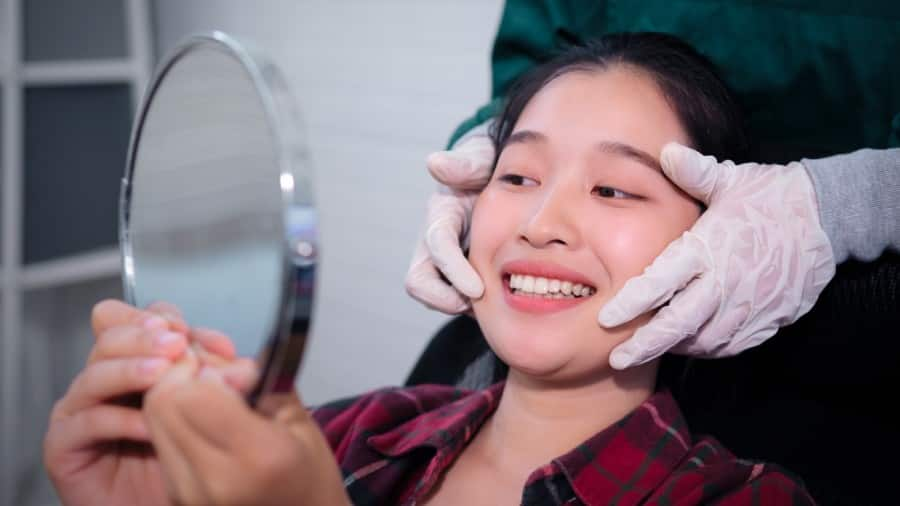What Is an Electric Toothbrush?
An electric toothbrush — also known as a powered toothbrush — is a battery-operated device with bristles that either vibrate or rotate to clean your teeth. Electric toothbrushes can usually be divided into three categories, but the lines are beginning to blur as newer models contain multiple features. These categories include:
- Oscillating rotary toothbrushes. These toothbrushes have small circular heads that rotate back and forth to clean each tooth. Some models combine this rotating feature with vibrating and pulsing to help dislodge more plaque.
- Sonic toothbrushes. Sonic toothbrushes have vibrating brush heads that move bristles side-to-side at high speeds. To be classified as a sonic toothbrush, the vibration has to be fast enough to produce an audible hum. Sonic toothbrushes on the market today offer frequencies of up to and over 50,000 movements per minute.
- Ultrasonic toothbrushes. Instead of relying on physical motion to clean your teeth, ultrasonic toothbrushes use a high frequency of vibration called ultrasound to remove plaque and food debris. Ultrasound generates waves at a frequency beyond human hearing, and existing ultrasonic toothbrushes use working frequencies from 20 kHz up to 10 MHz, according to this research article published by Dentistry Journal in the United States. That's over 1.2 billion movements per minute! Though ultrasonic brushes can break up plaque without movement, most models also provide a sonic vibration to further remove plaque and food debris remnants.
What Are the Benefits of an Electric Toothbrush?
An electric toothbrush is not required for clean and healthy teeth (a manual toothbrush will work just fine), but some research suggests that it can better help in maintaining gum health and reducing tooth decay. An 11-year study published in the Journal of Clinical Periodontology in the United States found that using an electric toothbrush resulted in 22% less pocket depth and gum recession and 18% less tooth decay progression. Electronic toothbrush users also maintained 19.5% more teeth in the mouth than manual brushers. The combined results from 18 studies published in the Journal of Clinical Dentistry in the United States supports this finding, showing that sonic toothbrushes significantly decreased plaque and gingivitis more effectively than manual toothbrushes over three months.
Electric Toothbrush Features
Powered toothbrushes can also provide benefits through many features that help improve your tooth-brushing technique. Some of these include:
- Timer. Many electric toothbrush models come with a two-minute timer to encourage you to brush for the entire recommended time. Some brushes buzz or beep every 30 seconds to allow you to spend equal time brushing each quadrant of the mouth.
- Pressure sensor. If you tend to over brush, some models include a sensor that activates when you put too much pressure on your teeth and are at risk for abrasion.
- Larger handle. Powered toothbrushes come with wide, comfortable handles that make it easier for those with arthritis and certain medical conditions to grip or use than a conventional brush.
- Cleaning modes. Some electric brushes come with different modes, so you can choose how your toothbrush cleans certain teeth in your mouth based on your oral hygiene goals. For example, some have a mode for sensitive teeth to provide a more gentle cleaning.
- Reminders. Your powered toothbrush might also remind you to change the brush head every three months to increase cleanliness and prevent brushing your teeth with worn toothbrush bristles.
- Smartphone apps. High-end models may even come with Bluetooth and built-in sensors connected to a smartphone app and track your brushing habits. These apps also exist for kids, so you can start encouraging healthy oral care habits early.
What Electric Toothbrush Should I Use?
The best electric toothbrush for you is the one you feel the most comfortable using. Sufficient evidence exists to support the use of both oscillating rotary toothbrushes and sonic toothbrushes, and your choice depends on personal preference. Still, it's more important that you focus on achieving proper brushing technique. When choosing the best electric toothbrush for you, look for the following:
- Ease of use. Your toothbrush should make brushing more comfortable, not more complicated.
- Comfortable design. The handle should be easy to grip, and the brush head and bristle design should accommodate your mouth.
- Soft bristles. Choose soft bristles to clean your teeth as it prevents causing damage to your gums or tooth enamel.
If you still have questions about the best powered toothbrush for you, seek advice from your dentist. They can recommend the model that best suits your needs and show you how to use the technology. When used correctly, an electric toothbrush can provide many excellent benefits for a radiant, healthy smile.










